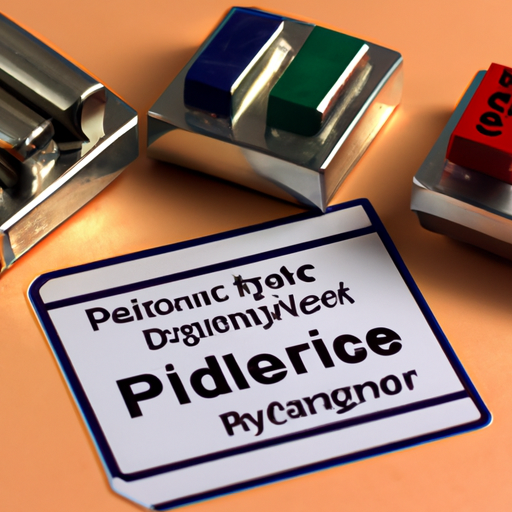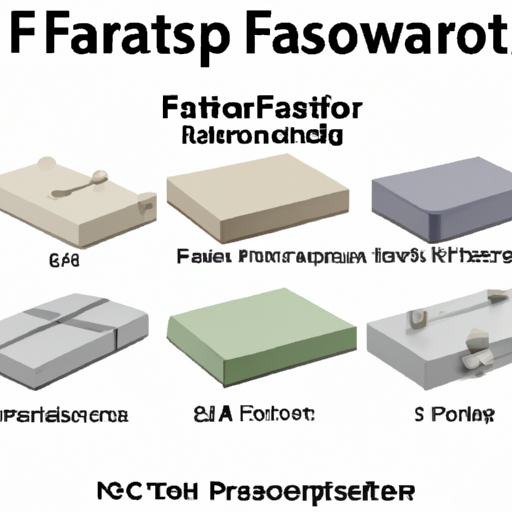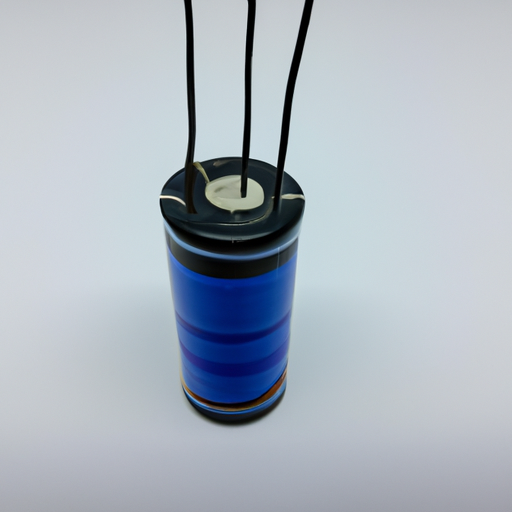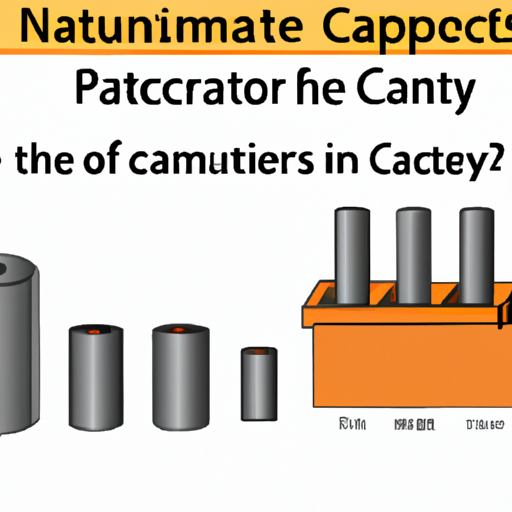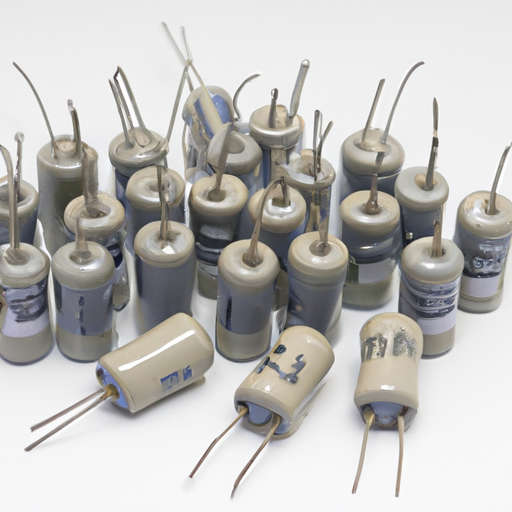What are the prices of popular capacitor parameters and models in stock?
What are the Prices of Popular Capacitor Parameters and Models in Stock?
I. Introduction
Capacitors are fundamental components in electronic circuits, serving a variety of functions such as energy storage, filtering, and signal coupling. They are essential in devices ranging from simple household electronics to complex industrial machinery. Understanding the various parameters and models of capacitors is crucial for engineers, hobbyists, and anyone involved in electronics. This article aims to provide an informative guide on the prices of popular capacitor parameters and models currently in stock, helping readers make informed purchasing decisions.
II. Understanding Capacitor Parameters
A. Capacitance
Capacitance is the primary parameter of a capacitor, defined as the ability of a capacitor to store electrical charge. It is measured in Farads (F), with common values ranging from picofarads (pF) to microfarads (µF) and even millifarads (mF) for larger capacitors. The choice of capacitance value depends on the application; for instance, small capacitors (10 pF to 100 nF) are often used in high-frequency applications, while larger capacitors (1 µF to 1000 µF) are used in power supply circuits.
B. Voltage Rating
The voltage rating of a capacitor indicates the maximum voltage the capacitor can handle without breaking down. This parameter is crucial for ensuring the reliability and safety of electronic circuits. Common voltage ratings for capacitors include 6.3V, 10V, 16V, 25V, 50V, and 100V, with higher ratings available for specialized applications. Selecting a capacitor with an appropriate voltage rating is essential to prevent failure and ensure optimal performance.
C. Tolerance
Tolerance refers to the allowable deviation from the specified capacitance value. It is expressed as a percentage and can significantly impact the performance of a circuit. Common tolerance values include ±5%, ±10%, and ±20%. For precision applications, tighter tolerances (±1% or ±2%) are often required, while less critical applications may accept wider tolerances.
D. Temperature Coefficient
The temperature coefficient indicates how the capacitance value changes with temperature. It is an important parameter for applications where temperature variations are expected. Capacitors can have different types of temperature coefficients, such as X7R, C0G, and Y5V, each suited for specific applications. Understanding the temperature coefficient helps in selecting the right capacitor for environments with varying temperatures.
E. Equivalent Series Resistance (ESR)
ESR is a measure of the internal resistance of a capacitor, which affects its performance in high-frequency applications. A lower ESR is generally desirable, as it leads to better efficiency and reduced heat generation. Typical ESR values vary by capacitor type; for example, ceramic capacitors tend to have lower ESR compared to electrolytic capacitors. Understanding ESR is crucial for applications such as power supply decoupling and audio circuits.
III. Types of Capacitors
A. Ceramic Capacitors
Ceramic capacitors are widely used due to their small size, low cost, and excellent performance characteristics. They are available in various capacitance and voltage ratings, making them suitable for a range of applications, from decoupling to timing circuits. Price ranges for ceramic capacitors typically vary from $0.01 to $1.00, depending on capacitance and voltage ratings.
B. Electrolytic Capacitors
Electrolytic capacitors are known for their high capacitance values and are commonly used in power supply applications. They are polarized, meaning they have a positive and negative terminal, which must be connected correctly in a circuit. Prices for electrolytic capacitors generally range from $0.10 to $5.00, depending on capacitance and voltage ratings.
C. Film Capacitors
Film capacitors are known for their stability and low ESR, making them ideal for applications requiring high precision. They are available in various types, including polyester, polypropylene, and polystyrene. Price variations for film capacitors can range from $0.50 to $10.00, depending on specifications and quality.
D. Tantalum Capacitors
Tantalum capacitors are known for their high capacitance in a small package and are often used in compact electronic devices. They are more expensive than other types of capacitors due to the cost of tantalum material. Pricing for tantalum capacitors typically ranges from $0.50 to $20.00, depending on capacitance and voltage ratings.
E. Supercapacitors
Supercapacitors, also known as ultracapacitors, are designed for energy storage applications, providing high capacitance values and rapid charge/discharge capabilities. They are commonly used in applications such as energy harvesting and backup power. Prices for supercapacitors can range from $1.00 to $100.00, depending on capacitance and voltage ratings.
IV. Factors Influencing Capacitor Prices
A. Material Composition
The materials used in capacitor construction significantly impact performance and cost. For example, ceramic capacitors are generally less expensive than tantalum capacitors due to the availability and cost of materials. Understanding the material composition helps in selecting capacitors that meet both performance and budget requirements.
B. Manufacturing Processes
The manufacturing process of capacitors can also influence pricing. Advanced manufacturing techniques, such as thin-film technology, may result in higher costs due to the complexity and precision required. Additionally, economies of scale can affect pricing; larger production runs often lead to lower per-unit costs.
C. Market Demand and Supply
Market trends play a crucial role in determining capacitor prices. High demand for specific types of capacitors, such as those used in electric vehicles or renewable energy systems, can drive prices up. Conversely, oversupply can lead to price reductions. Seasonal fluctuations, such as increased demand during certain times of the year, can also impact availability and pricing.
D. Brand Reputation
The reputation of a capacitor brand can influence pricing. Established brands with a history of reliability and performance may charge a premium for their products. In contrast, lesser-known brands may offer lower prices to attract customers. Comparing different brands and their pricing strategies can help consumers find the best value for their needs.
V. Current Market Prices for Popular Capacitor Models
A. Overview of Popular Capacitor Models
Some popular capacitor models include the Panasonic ECJ series (ceramic), Nichicon UHE series (electrolytic), WIMA MKS series (film), Kemet T520 series (tantalum), and Maxwell BCAP series (supercapacitors). Each of these models has specific specifications that cater to different applications.
B. Price Comparisons for Different Types and Brands
Ceramic Capacitors (Panasonic ECJ series): Prices range from $0.01 to $0.50, depending on capacitance and voltage.
Electrolytic Capacitors (Nichicon UHE series): Prices range from $0.10 to $3.00, depending on capacitance and voltage.
Film Capacitors (WIMA MKS series): Prices range from $0.50 to $5.00, depending on specifications.
Tantalum Capacitors (Kemet T520 series): Prices range from $0.50 to $15.00, depending on capacitance and voltage.
Supercapacitors (Maxwell BCAP series): Prices range from $1.00 to $50.00, depending on capacitance and voltage.
C. Availability and Stock Status of Popular Models
The availability of popular capacitor models can vary based on market demand and supply chain factors. It is advisable to check with multiple suppliers to find the best stock status and pricing. Online electronics distributors often provide real-time stock information, making it easier to compare options.
D. Recommendations for Purchasing Based on Price and Performance
When purchasing capacitors, consider the following recommendations:
- Assess the specific requirements of your application, including capacitance, voltage rating, and tolerance.
- Compare prices across different suppliers to find the best deals.
- Consider the reputation of the brand and the reliability of the capacitor.
- Stay informed about market trends and potential price fluctuations.
VI. Conclusion
In summary, understanding capacitor parameters and pricing is essential for making informed purchasing decisions. Capacitors play a vital role in electronic circuits, and selecting the right type and model can significantly impact performance. By staying updated on market trends and new technologies, consumers can ensure they are getting the best value for their investment in capacitors.
VII. References
- Electronic Component Distributors
- Capacitor Manufacturer Websites
- Industry Publications on Capacitor Technology
- Online Electronics Forums and Communities
This comprehensive guide provides insights into the prices of popular capacitor parameters and models currently in stock, helping readers navigate the complexities of capacitor selection and purchasing.

